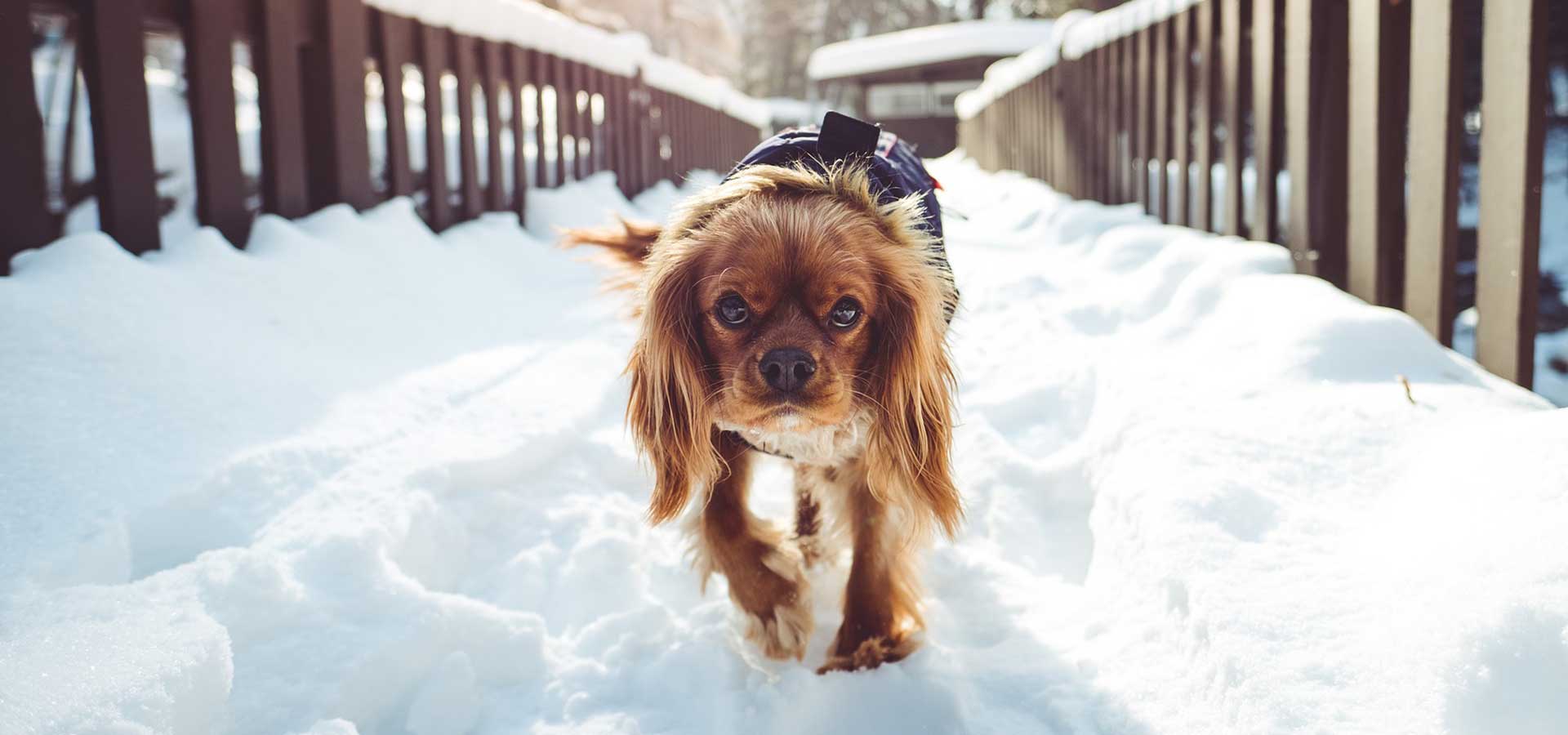As we approach winter you will have noticed that the temperature has changed and the days are now darker. As we prepare ourselves for the harsh cold weather, we should also look to prepare how we care best for our beloved pets during the colder weather.
Often, the care for a dog is overlooked during the colder months. Dog owners presume that dogs can survive the bracing cold winds or snowing conditions (depending on where you live in the UK) This is not the case.
Dogs can suffer from colds, sensitivity in their paws to what allergens the season brings, as well as dry, flaky skin. Depending on the dog breed, dogs need outerwear protection to keep them warm on their winter walks and some may also need protective footwear to shelter their paws from the wet conditions.
Cold weather conditions
There are two cold weather conditions that all dog owners need to be aware of and understand that dogs are also in danger of suffering from.
The first condition is frostbite. Frostbite happens when the dog's body becomes too cold. The body goes into autopilot and pulls blood from other areas of the body to the center to help the body stay warm.
The dog's ears, paws, and tail can become so cold that ice crystals start to form in the tissue and seriously impacts the dog's health. Frostbite isn't always easy to spot as your dog can’t tell you that they’re not feeling very well. Signs to watch out for are a greyish or pale looking skin. Their skin may also turn hard and very cold to touch.
The second serious condition that dogs can suffer from is hypothermia. This can happen when the dog spends too much time in the cold, wet weather. If a dog is suffering from a serious health condition that they’re prone to suffering from hypothermia.
If your dog is shivering uncontrollably and their limbs are very cold to touch, then they may be suffering from hypothermia. As this condition progresses the dog will show signs of depression, weakness, and lethargy. Their muscles will start to stiffen and their heart rate and breathing start to slow down. If this condition is not spotted early it can be life-threatening.
How to spot if your dog is cold
If you notice that your dog is shivering uncontrollably, appears anxious, whining and doesn't want to walk or play further; then it's very likely that they’re suffering from the cold weather and may need to go back indoors.
If you need a coat to go outside then it's more than likely that your dog will need some form of outerwear protection. There are some dog breeds that suffer from the cold more and some dog breeds that are better accustomed to cold conditions. For further information on what dog breeds are prone to suffering in the cold weather, please refer to our article on “How cold is too cold to take your dog outside?”
To help your dog feel well and protect them during the colder months, we have listed below 5 winter well-being tips.
How to care for your dog during winter
Suitable outwear clothing
As previously mentioned if the temperature is that cold you need a coat to go outside, then you must also consider some winter clothing for your dog. Small dog breeds and dog breeds with very little fur, will need a coat to brace the cold weather. As your dog is closer to the ground they will feel the cold a lot more.
Paw care
Just as humans can suffer from sore and cracked skin during the winter months, so can your dog. During the cold weather, you should pay extra attention to the care of your dog's paws. It's best to avoid areas covered with salt and grit as this can really dry your dog's paws out.
When they come in from a walk, you should dry their paws off and if their paws are looking sore or chapped, then covering their paws with a suitable paw balm will help soothe any irritation.
Provide warm and comfortable bedding
Your dog should have a suitable bed at all times, regardless of any season. During the colder months, you may need to locate the dog's bed elsewhere; away from any kind of draft or flooring that's not insulated. It's also worth investing in a nice, cozy blanket that they can snuggle up in.
If your dog requires a little more warmth to get comfortable then you could also look to invest in a doggie hot water bottle and place it in their bed for half an hour before they go to bed at night.
Maintain their coat and paws
The cold and wet weather can play havoc with your dog's skin, coat, and paws. Having the heating on full blast during winter will not only dry your skin out but also your dog's skin. To help keep your dog's skin in optimum condition you should introduce supplements and fish oils into their diet to help them stay healthy during winter.
If you notice any dry, flaky spots on your dog's coat, then you can apply a herbal balm remedy that's natural and will nourish your dog's skin.
Keep your dog hydrated
Dogs can easily dehydrate during winter as they can in summer. The heating in your home can make your dog extra thirsty. You must ensure that your dog's water bowl is constantly filled with fresh, cold water.
Finally, you should pay extra attention to a dog that has reached its senior years. Older dogs are more than likely to suffer from conditions such as arthritis and are slower on their paws than a younger dog.
Take your time during winter walks with an older dog. Make sure not to walk them on slippery surfaces and keep them warm and safe whilst outside.




